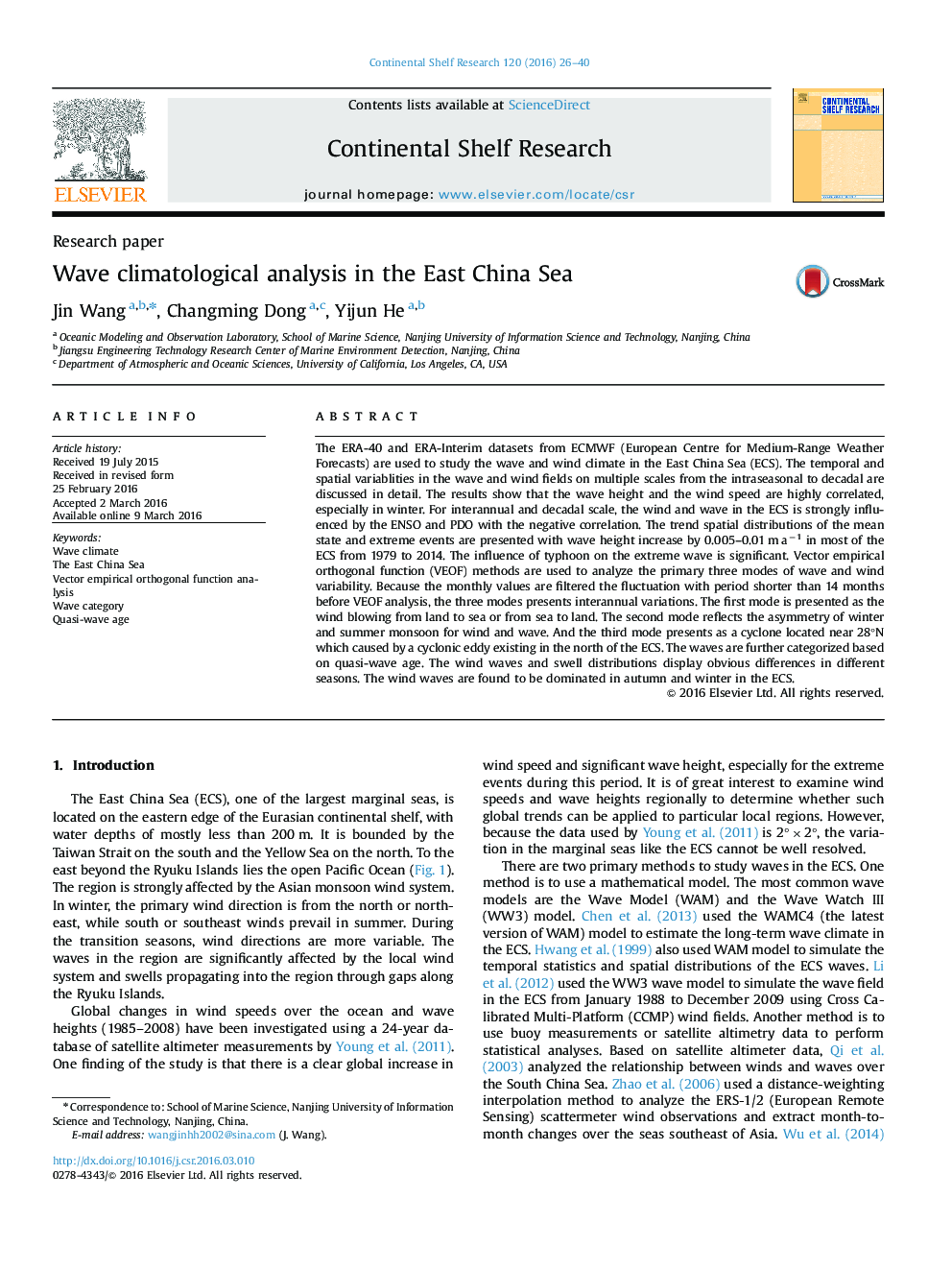| کد مقاله | کد نشریه | سال انتشار | مقاله انگلیسی | نسخه تمام متن |
|---|---|---|---|---|
| 4531537 | 1626093 | 2016 | 15 صفحه PDF | دانلود رایگان |
• The temporal and spatial variablities in the wave and wind fields on multiple scales are analyzed in the ECS.
• The trends of the mean state and extreme events are also given. The influence of typhoon on the extreme wave is studied.
• The wind and wave in the ECS is strongly influenced by the ENSO and PDO with the negative correlation.
• Vector empirical orthogonal function analysis is used to describe the variability.
• Waves are also categorized by quasi-wave age. The results suggest that wind waves dominate in autumn and winter in the ECS.
The ERA-40 and ERA-Interim datasets from ECMWF (European Centre for Medium-Range Weather Forecasts) are used to study the wave and wind climate in the East China Sea (ECS). The temporal and spatial variablities in the wave and wind fields on multiple scales from the intraseasonal to decadal are discussed in detail. The results show that the wave height and the wind speed are highly correlated, especially in winter. For interannual and decadal scale, the wind and wave in the ECS is strongly influenced by the ENSO and PDO with the negative correlation. The trend spatial distributions of the mean state and extreme events are presented with wave height increase by 0.005–0.01 m a−1 in most of the ECS from 1979 to 2014. The influence of typhoon on the extreme wave is significant. Vector empirical orthogonal function (VEOF) methods are used to analyze the primary three modes of wave and wind variability. Because the monthly values are filtered the fluctuation with period shorter than 14 months before VEOF analysis, the three modes presents interannual variations. The first mode is presented as the wind blowing from land to sea or from sea to land. The second mode reflects the asymmetry of winter and summer monsoon for wind and wave. And the third mode presents as a cyclone located near 28°N which caused by a cyclonic eddy existing in the north of the ECS. The waves are further categorized based on quasi-wave age. The wind waves and swell distributions display obvious differences in different seasons. The wind waves are found to be dominated in autumn and winter in the ECS.
Journal: Continental Shelf Research - Volume 120, 1 June 2016, Pages 26–40
